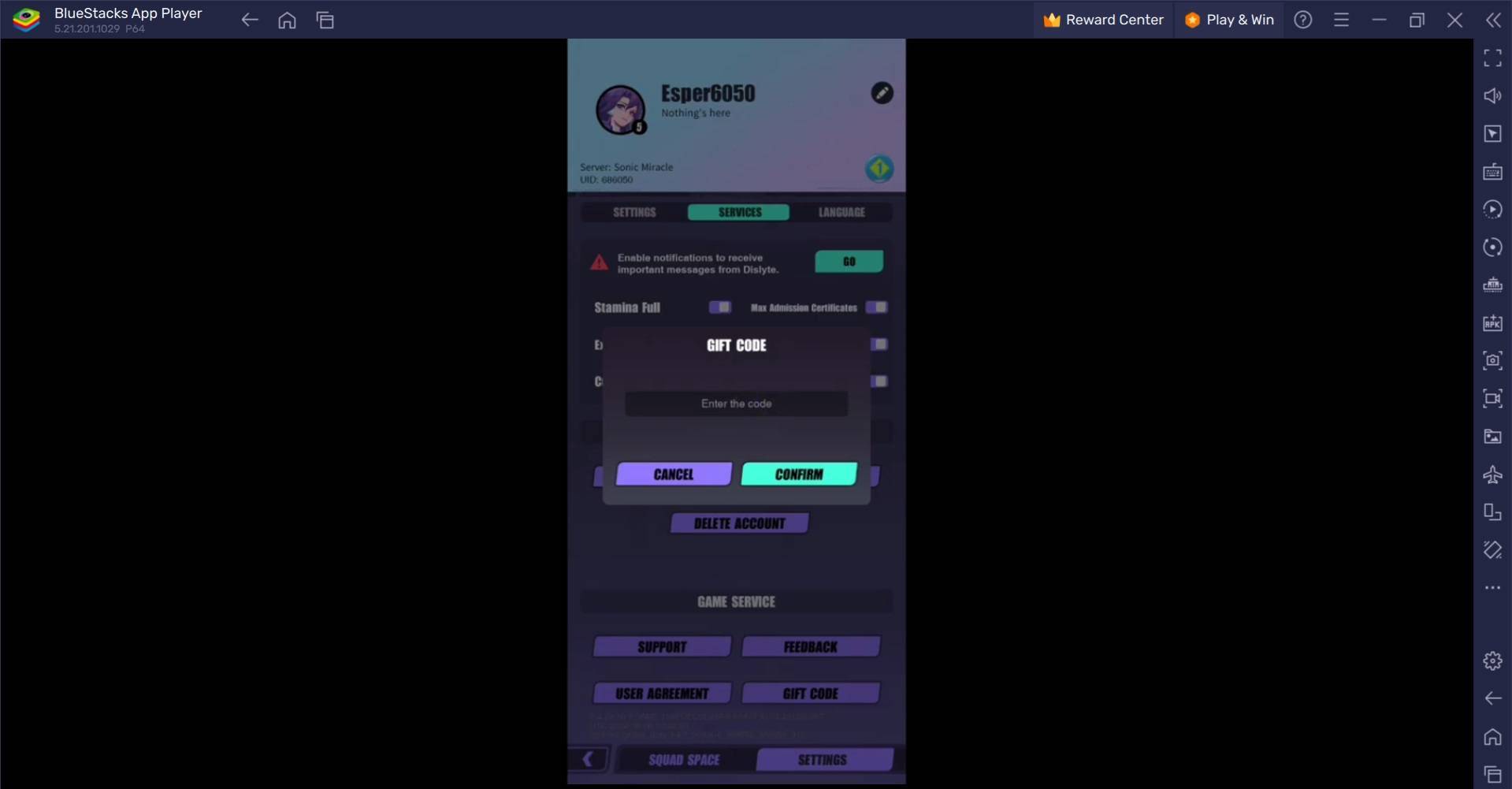When the Nvidia GeForce RTX 5090 was released, it offered a lackluster generational improvement over the RTX 4090, but at a significantly higher price. In contrast, the Nvidia GeForce RTX 5070 Ti, while not much faster than its last-generation counterpart, comes at a more affordable price point, making it the most sensible choice from the Blackwell series for budget-conscious buyers.
Priced at a base of $749, the GeForce RTX 5070 Ti is an exceptional 4K graphics card that effectively competes with the pricier RTX 5080. However, it's important to note that the model I reviewed, an aftermarket version from MSI, comes at a steeper $1,099, which is even more than the $999 RTX 5080. If you can find the RTX 5070 Ti at its base price of $749, it's likely the best graphics card for the majority of gamers, particularly those aiming for 4K gaming.
Purchasing Guide
The Nvidia GeForce RTX 5070 Ti will be available starting February 20, 2025, with a starting price of $749. Be aware that this is just the base price, and various models may be sold at higher prices. At $749, it's a fantastic value, but its appeal diminishes as the price approaches that of the RTX 5080.
Nvidia GeForce RTX 5070 Ti – Photos

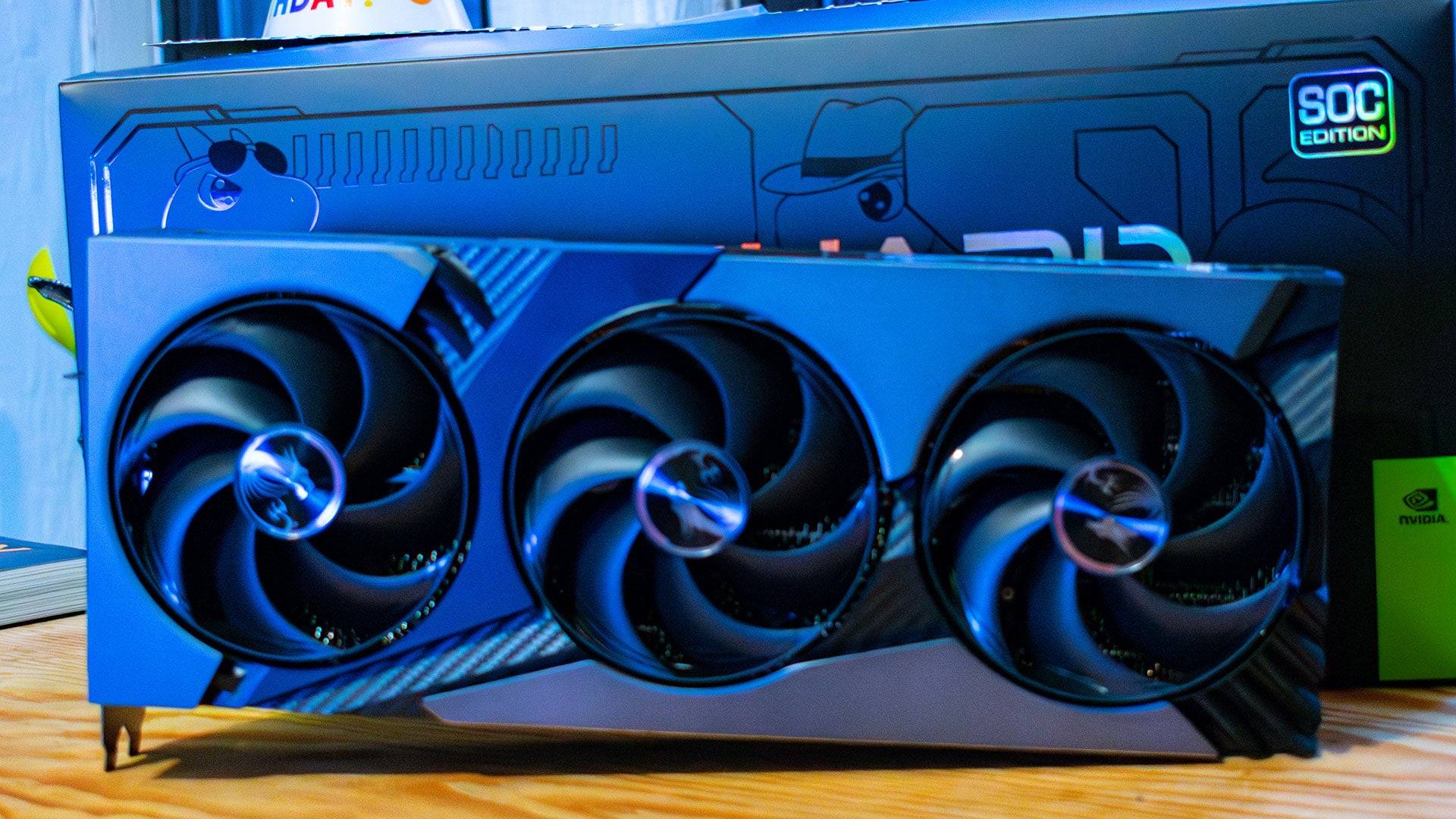 6 Images
6 Images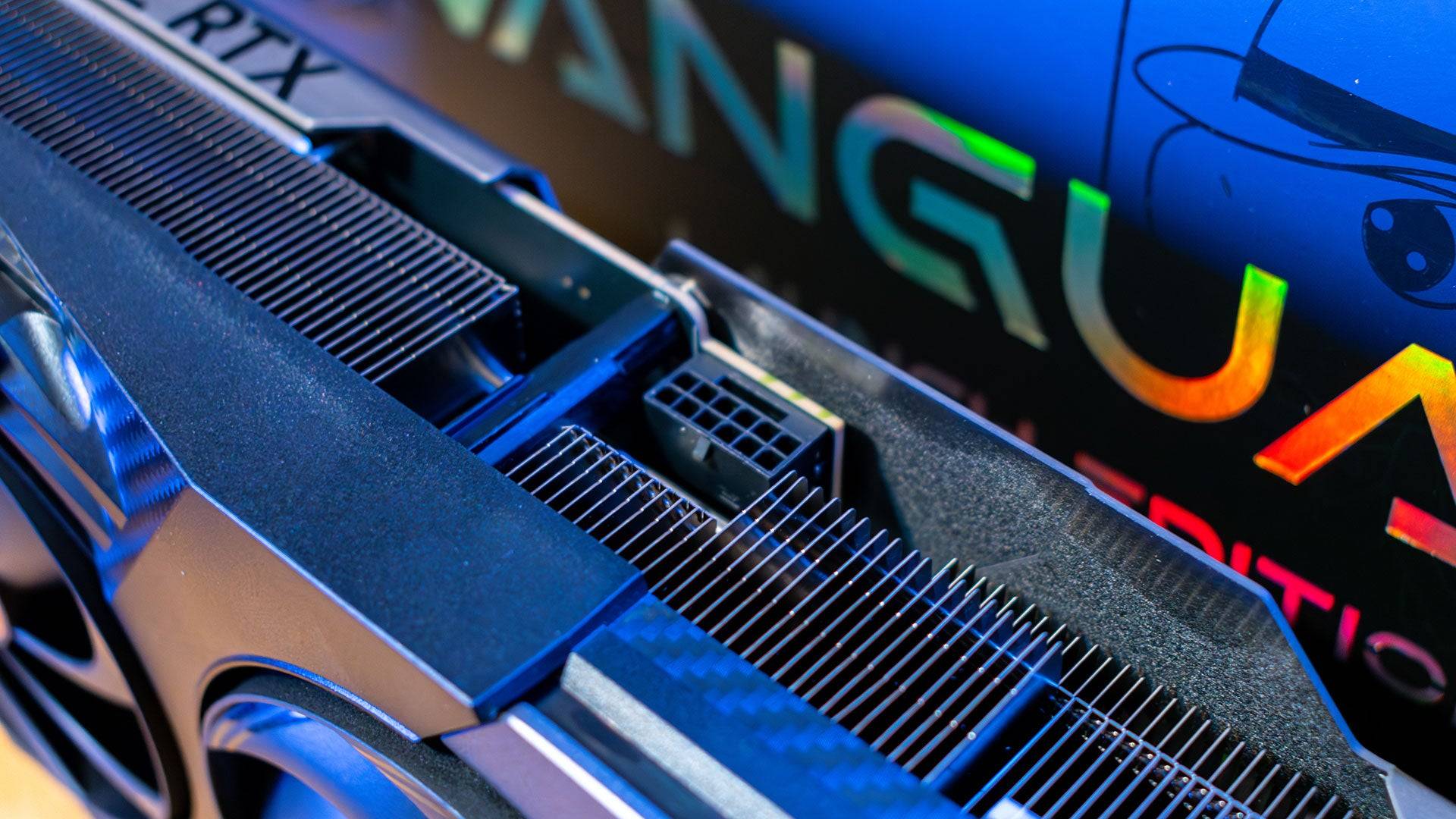

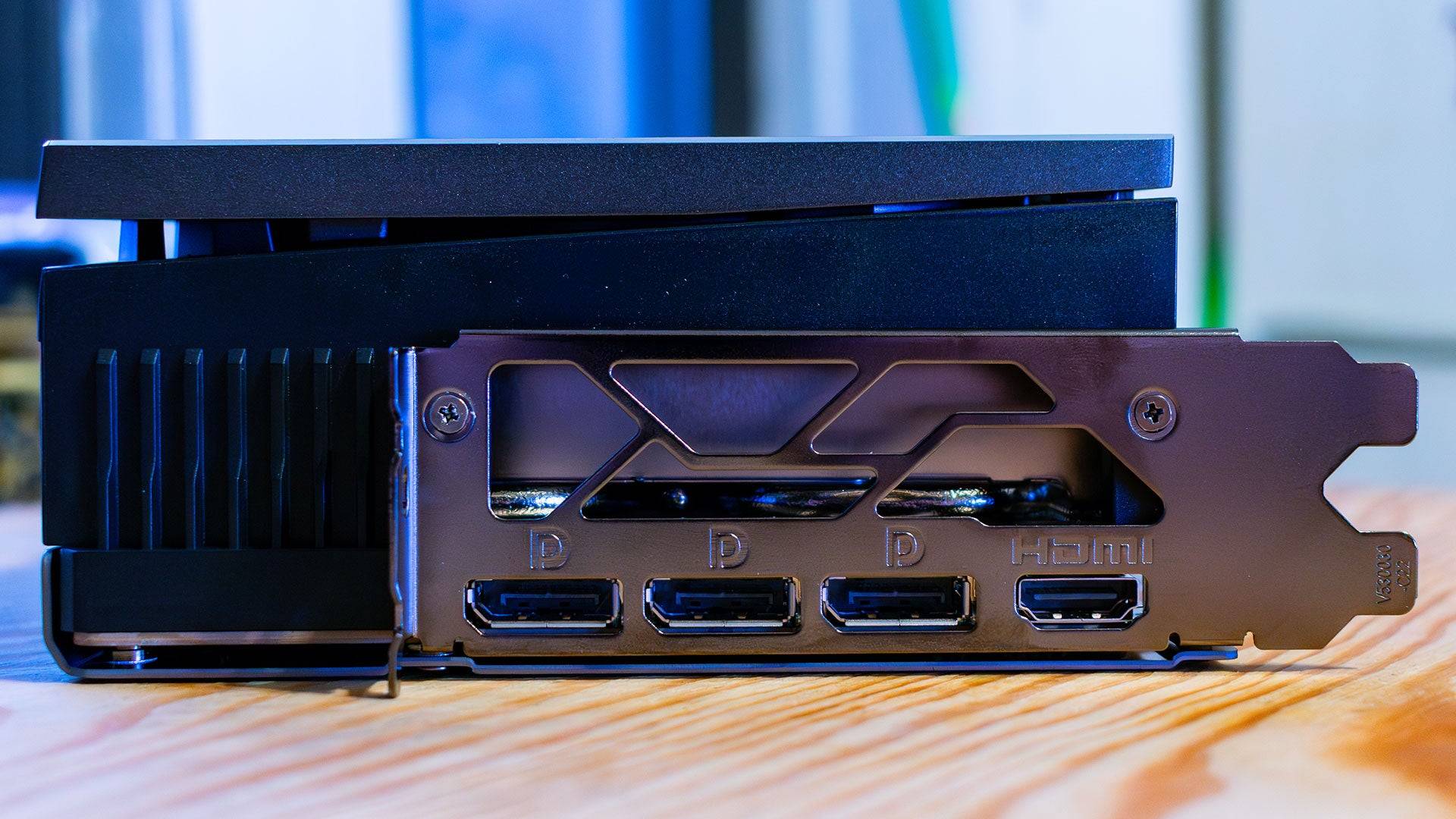

Specs and Features
The Nvidia GeForce RTX 5070 Ti is the third graphics card to be built on Nvidia’s Blackwell architecture. Originally designed for supercomputers powering AI models like ChatGPT, this architecture has been adapted for Nvidia’s latest gaming GPUs, maintaining a strong focus on AI.
The RTX 5070 Ti utilizes the same GB203 GPU as the RTX 5080 but with 14 of the streaming multiprocessors (SM) disabled, resulting in 70 SMs, 8,960 CUDA cores, 70 RT cores, and 280 Tensor Cores. It also features 16GB of GDDR7 RAM, though slightly slower than the RTX 5080. The highlight is the Tensor Cores, which Nvidia relies on for AI upscaling and frame generation, pushing the card's performance further.
The Blackwell architecture includes a new AI Management Processor (AMP), which optimizes workload distribution within the GPU, a task traditionally managed by the CPU. This enhances the efficiency of processes like DLSS and frame generation.
Nvidia has upgraded DLSS to utilize a Transformer model instead of a Convolutional Neural Network (CNN), improving image quality and reducing artifacts. DLSS 4 also introduces Multi-Frame Generation (MFG), generating up to three frames from each rendered frame, potentially boosting frame rates by up to 4x, though with increased latency. Nvidia’s Reflex technology helps mitigate this latency increase.
With a Total Board Power budget of 300W, the RTX 5070 Ti is not significantly more power-hungry than its predecessor. Nvidia recommends a 750W power supply, but for peace of mind, especially with high-end models like the MSI Vanguard Edition, an 850W PSU is advisable.

DLSS 4 – Is It Worth It?
While the RTX 5070 Ti offers improved performance over its predecessor, the true value lies in DLSS 4 and its multi-frame generation capabilities. This technology is especially beneficial for high-refresh-rate gaming monitors, though it does not significantly reduce latency.
MFG uses the Tensor Cores to analyze each frame and motion vector data from the game engine to predict and generate new frames. Although it can theoretically increase frame rates by up to 4x, real-world results vary. In Cyberpunk 2077, with the Ray Tracing Overdrive preset and DLSS set to performance, the RTX 5070 Ti achieved 46 fps with 43ms of latency. With 2x frame generation, this rose to 88 fps with 49ms latency, and with 4x frame generation, it reached 157 fps with 55ms latency.
In Star Wars Outlaws, the RTX 5070 Ti delivered 67 fps at 4K Max settings with DLSS on performance. Activating 2x frame generation increased this to 111 fps, reducing latency from 47ms to 34ms thanks to Reflex. With 4x frame generation, the frame rate climbed to 188 fps, with latency at 37ms.
Multi-Frame Generation enhances visual fluidity on high-refresh displays but does not improve responsiveness due to increased latency. However, the impact on latency is minimal when starting with a high frame rate, which is achievable with the RTX 5070 Ti even at 4K.
Nvidia GeForce RTX 5070 Ti – Benchmarks
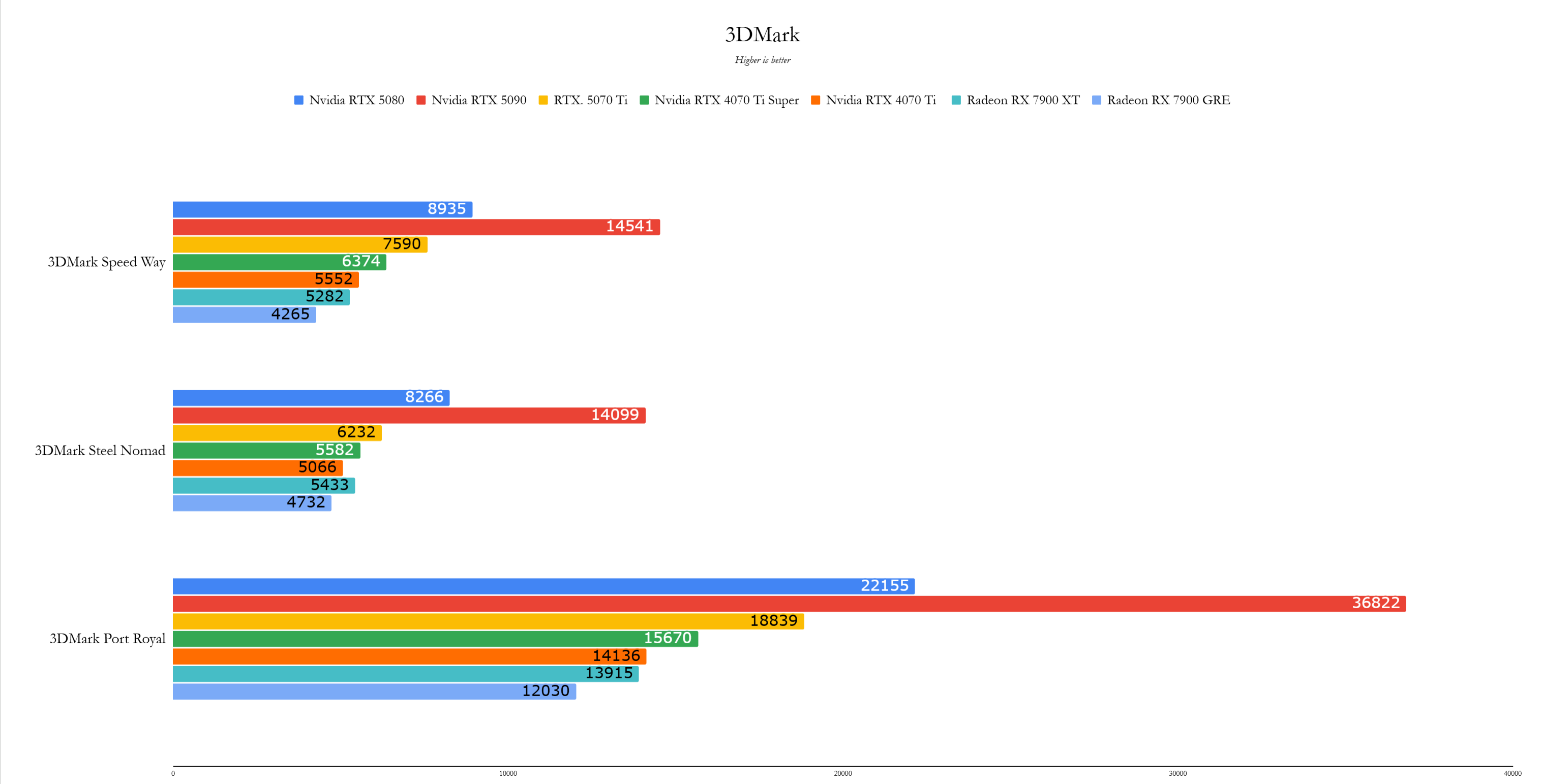
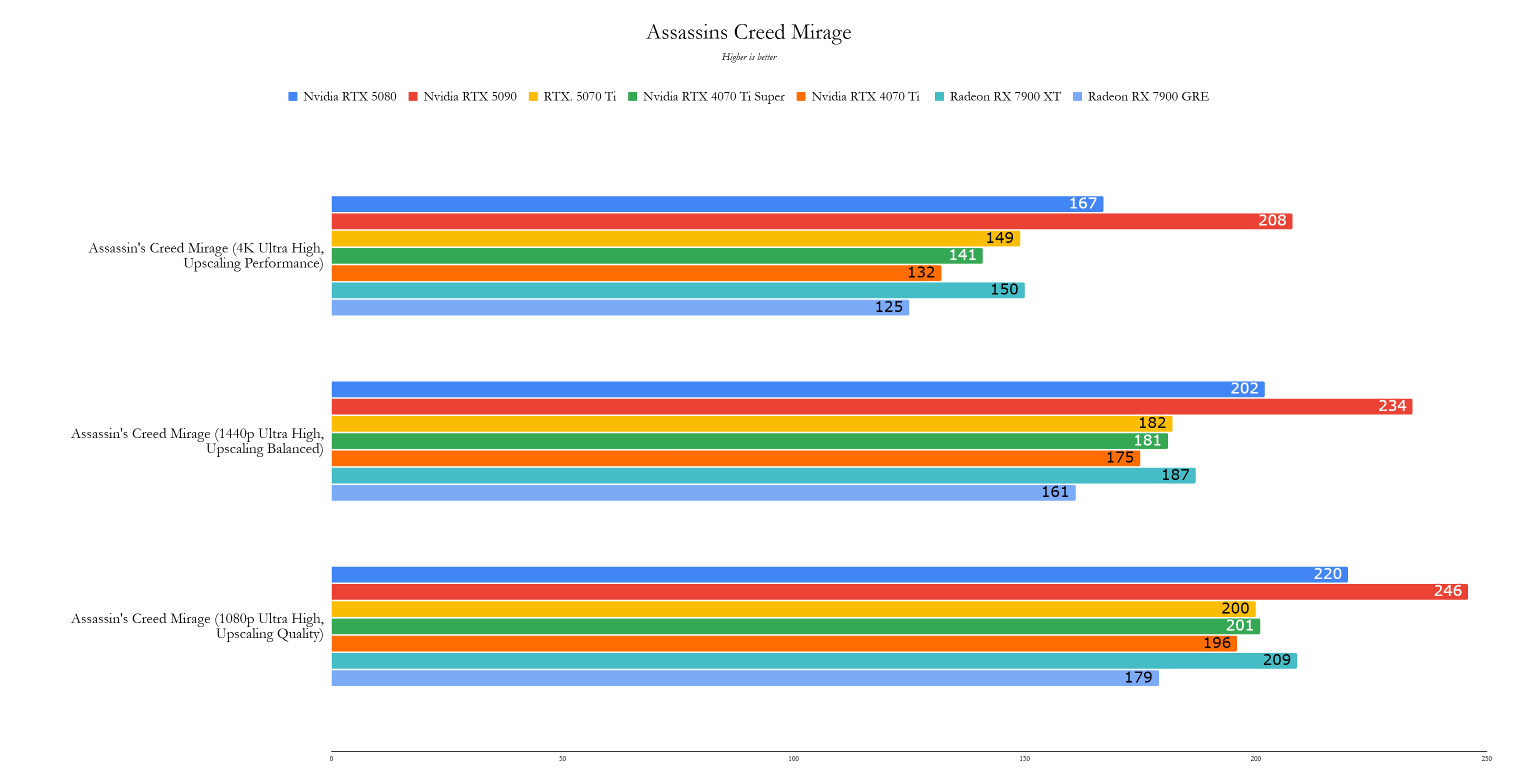 12 Images
12 Images
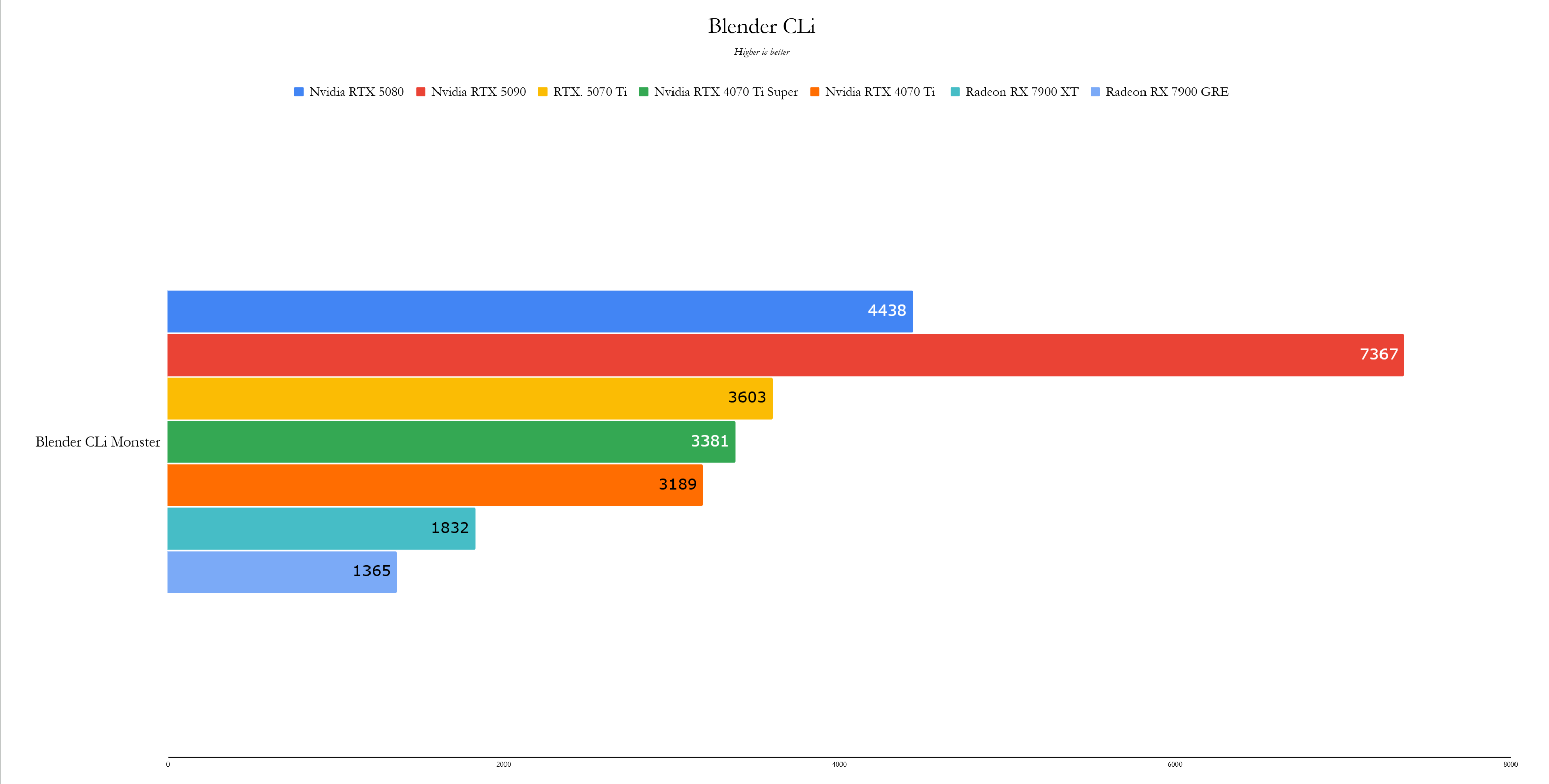
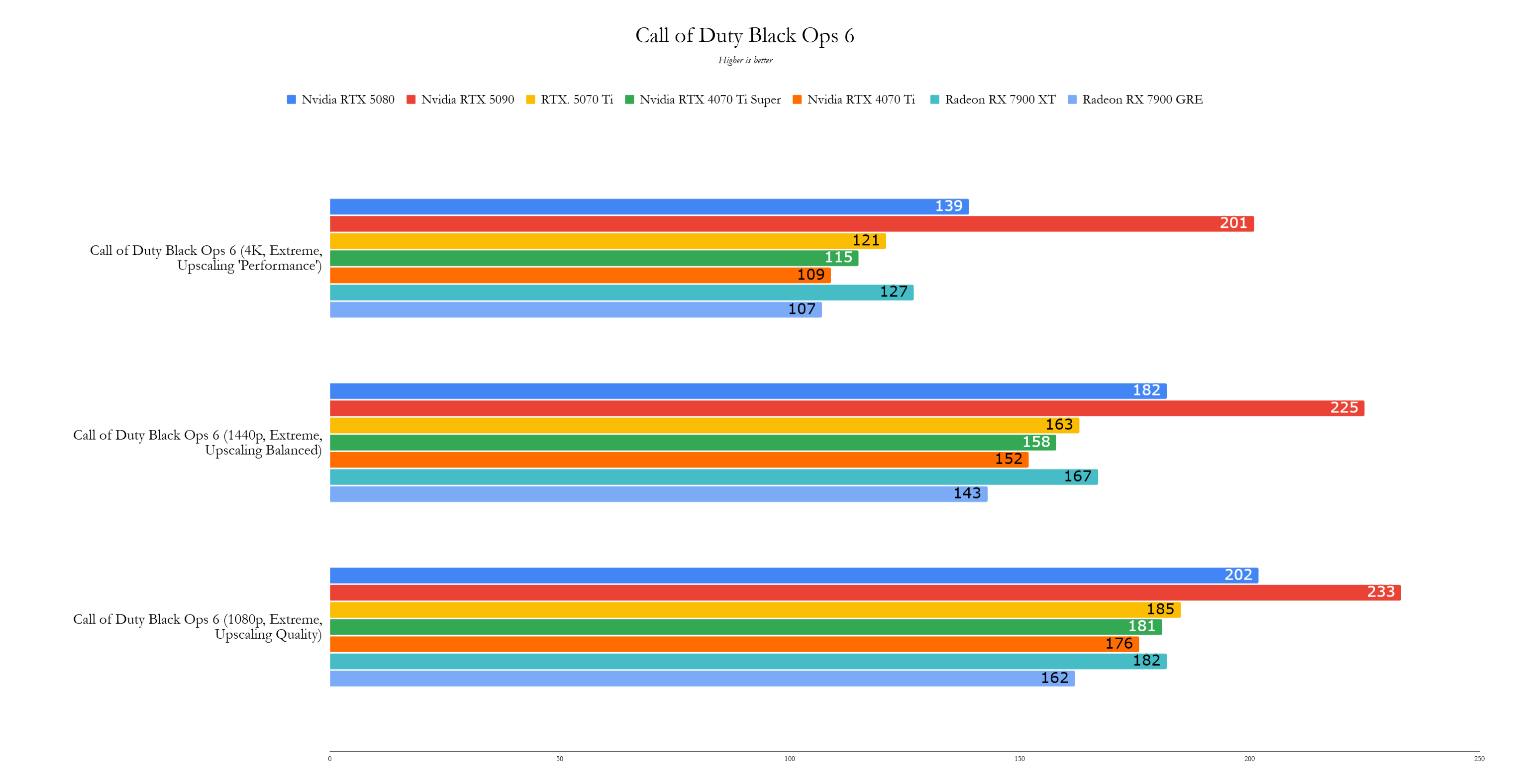
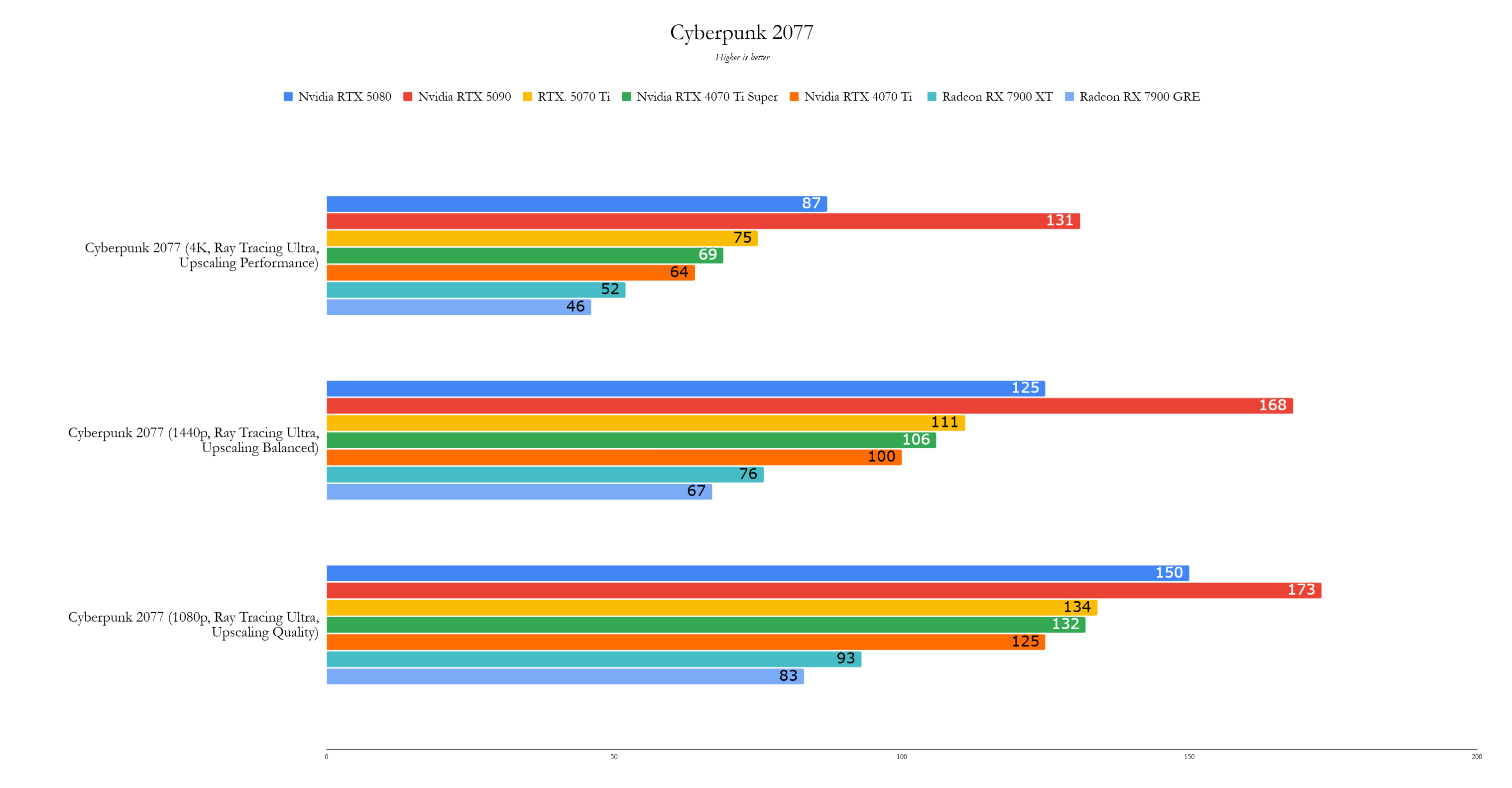
Performance
At 4K resolution, the Nvidia GeForce RTX 5070 Ti is approximately 11% faster than the RTX 4070 Ti Super and 21% faster than the RTX 4070 Ti, marking a significant generational improvement. The RTX 5070 Ti consistently achieves over 60 fps at 4K in demanding titles like Black Myth Wukong and Cyberpunk 2077.
The test system included an AMD Ryzen 7 9800X3D CPU, an Asus ROG Crosshair X870E Hero motherboard, 32GB of G.Skill Trident Z5 Neo RAM at 6,000MHz, a 4TB Samsung 990 Pro SSD, and an Asus ROG Ryujin III 360 CPU cooler. The RTX 5070 Ti was tested at stock settings on the MSI Vanguard SOC model, but scored based on its $749 MSRP. All tests were conducted with the latest drivers and game versions, without frame generation, using appropriate upscaling technologies for each card.
In 3DMark Speed Way, the RTX 5070 Ti scored 7,590 points, compared to 6,374 for the RTX 4070 Ti Super and 5,552 for the RTX 4070 Ti, showing a 19% and 36% improvement, respectively. In Port Royal, it achieved 18,839 points, against 15,670 and 14,136 for the RTX 4070 Ti Super and RTX 4070 Ti, indicating strong potential for future performance enhancements.
In actual games, performance varied. In Call of Duty: Black Ops 6 at 4K Extreme, the RTX 5070 Ti reached 121 fps, a modest 5% improvement over the RTX 4070 Ti Super's 115 fps. In Cyberpunk 2077 at 4K with Ray Tracing Ultra, it achieved 75 fps, outperforming both the RTX 4070 Ti Super and RTX 4070 Ti by 9% and 17%, respectively.
Metro Exodus: Enhanced Edition, tested without upscaling, saw the RTX 5070 Ti hit 48 fps at 4K on the Extreme preset, compared to 45 fps for the RTX 4070 Ti Super and 42 fps for the RTX 4070 Ti. In Red Dead Redemption 2, it was slightly slower at 113 fps versus the RTX 4070 Ti Super's 115 fps, though this was an anomaly.
Total War: Warhammer 3, without ray tracing or upscaling, showed the RTX 5070 Ti averaging 78 fps at 4K max settings, a 15% improvement over the RTX 4070 Ti Super and 30% over the RTX 4070 Ti. In Assassin’s Creed Mirage, it achieved 149 fps at 4K Ultra High, outperforming the RTX 4070 Ti Super and RTX 4070 Ti but slightly behind the Radeon RX 7900 XT.
Black Myth Wukong, a highly demanding game, saw the RTX 5070 Ti averaging 66 fps at 4K with the Cinematic Preset and DLSS at 40%, a 10% improvement over the RTX 4070 Ti Super. In Forza Horizon 5, it reached 152 fps at 4K with the Extreme preset, a 15% and 21% improvement over the RTX 4070 Ti Super and RTX 4070 Ti, respectively, and a 10% lead over the Radeon RX 7900 XT.
In today's market, even mid-range graphics cards are capable of 4K gaming. If you can secure the Nvidia GeForce RTX 5070 Ti at its base price of $749, it offers exceptional value, particularly for 4K gaming, providing a notable performance uplift over its predecessor at a more accessible price point.
 Home
Home  Navigation
Navigation






 Latest Articles
Latest Articles










 Latest Games
Latest Games










